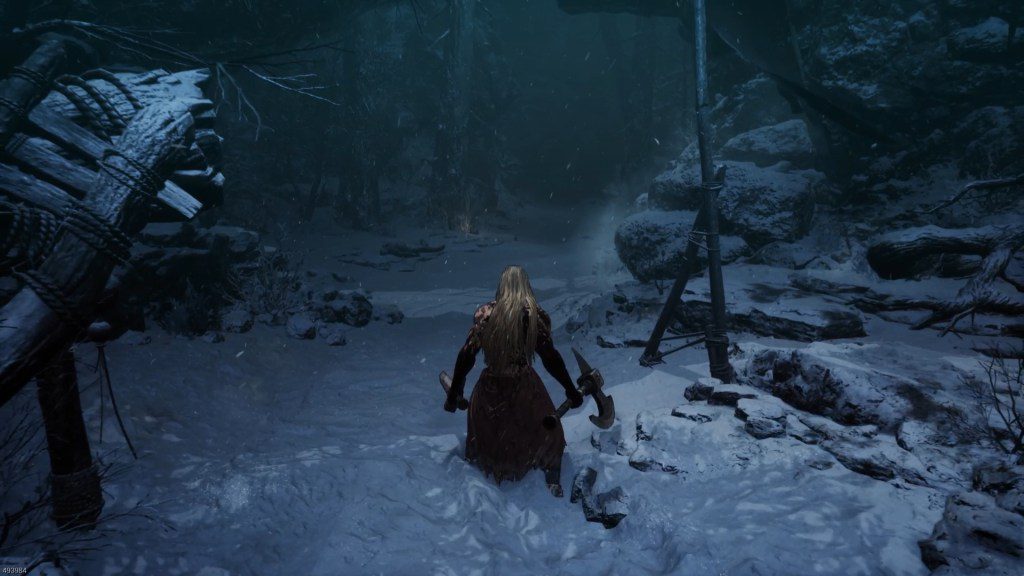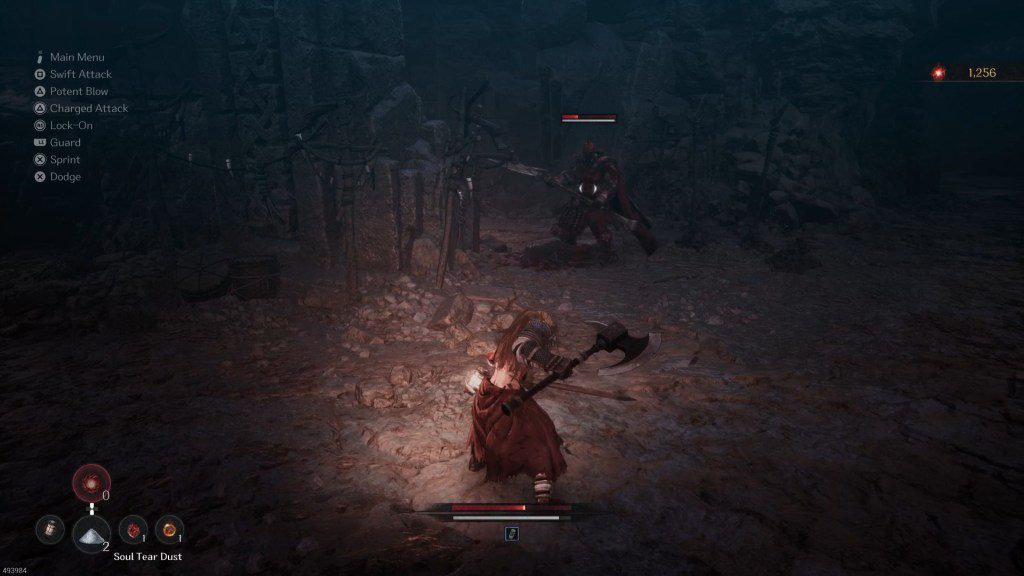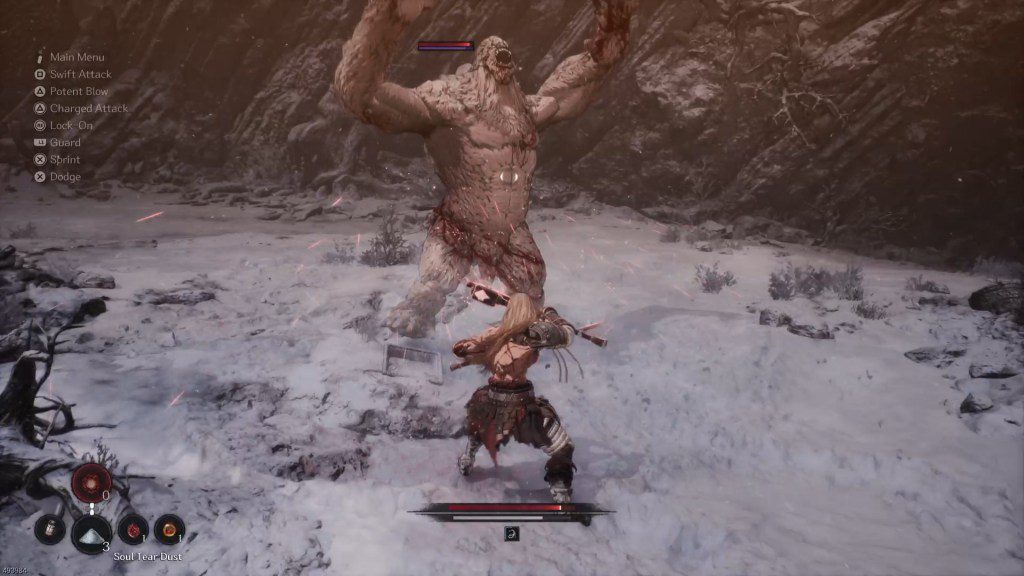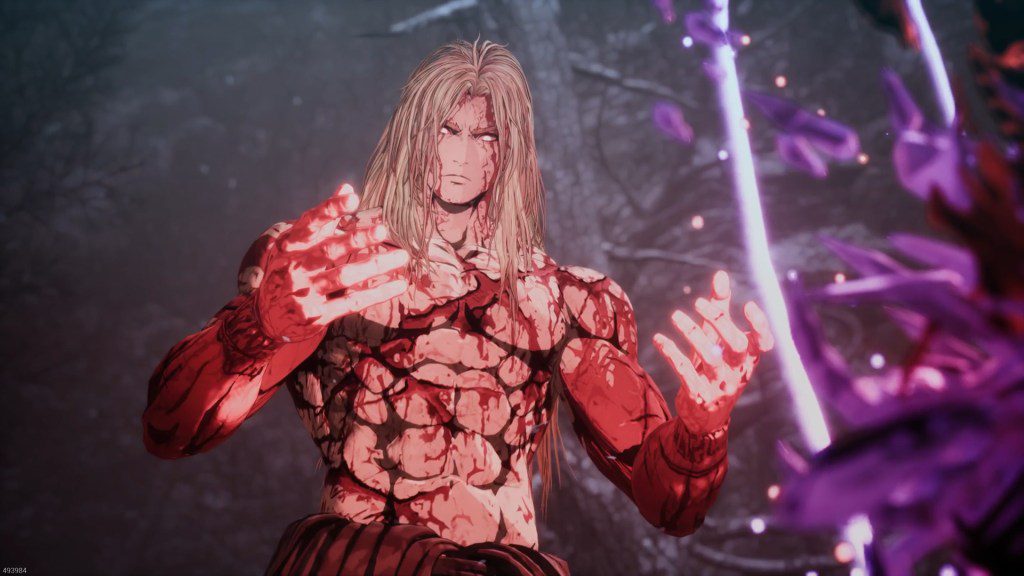‘The First Berserker: Khazan’ Is a Stylishly Brutal Take on ‘Soulslike’ Games
Neople’s Dungeon and Fighter (or Dungeon Fighter Online, as it’s known in the US) series isn’t exactly a household name; but the Korean MMO brawler has been running for 20 years and is one of the highest-grossing media franchises ever made (we’re talking more than Looney Tunes, TMNT, and The Avengers). While not making its way to the States until 2010 (before shutting down three years later, then re-launching again in 2015), the original Dungeon and Fighter is an international phenomenon that’s still going strong today. It’s so big that a yearly festival dedicated to the series is hosted in Korea.
But recently, Neople, with the help of publisher Nexon, has been branching the series out, with the franchise receiving releases tailored for console gaming. These started out with 2022’s fighting game, DNF Duel, which was co-developed with fighting game legends Arc System Works (Guilty Gear, Dragon Ball FighterZ) and Eighting (Bloody Roar, Marvel vs. Capcom 3). Also in the works are Dungeon and Fighter Overkill which brings the series roots forward with a 3D side-scrolling beat ’em up. There’s also Dungeon and Fighter: Arad — an open-world RPG that looks to be priming the series to take the fight to Genshin Impact — which was recently shown off at The Game Awards 2024.
However, the newest branch for the series arrives on March 27 in the form of The First Berzerker: Khazan. This is classified as a “hardcore action RPG,” which is a fancier way of saying it’s a “soulslike.” But Neople’s first stab at the genre is a breath of fresh air in many places; its action is fast-paced, brutally difficult, and heart-pumping, with a solid anime-esque aesthetic. When The First Berserker: Khazan does its own thing with the conventions of the FromSoftware formula, it’s a really exciting game, but it also feels bound to some of the genre’s tropes, even when they don’t really fit.
For the general
The First Berserker: Khazan follows Khazan — a former barbarian who rose far enough to become a great general in the Pell Los Empire, earning the recognition of the nation’s emperor. Khazan became a hero to the people after taking down the Berserk Dragon, Hismar, and saving the empire alongside Ozma, the empire’s greatest mage. Later down the line, after being summoned to resolve a conflict that was a front for the Emperor’s treachery, Khazan was deemed a traitor to the empire, and he and his comrades — like Ozma — were executed or exiled for aiding a traitor.
Khazan was tortured by the empire, leaving him unable to fight back against his oppressors, and in the opening of the game has him being transported into the mountains for his eventual execution. However, on the way, a wandering phantom senses the general’s latent power and decides that he is the perfect host. While initially trying to expel the ghost, the two come to an agreement that they need each other’s strength to achieve their goals. Khazan is filled with a lust for revenge against the emperor and all of those who betrayed him, while the Blade Phantom seeks to restore balance to the underworld, which has been sent into disarray due to events on the surface.
Betrayed and left for dead, Khazan is restored to power by a phantom.
Nexon
Throughout the journey Khazan runs into new and former allies who help him piece together elements of his history, as well as that of the world. Although these are typically left to chatter within the game’s central hub rather than exposition. The game does, however, feature an encyclopedia and character relationship chart to allow those interested to dig more into the world. The levels are also scattered with notes and other collectibles that help shape what was there.
Despite its ties to the original Dungeon and Fighter released in 2005 — of which Khazan, Ozma, and the Berserk Dragon are present — knowledge of the MMO isn’t necessary at all, with this being a self-contained story. We’re sure there are hints and nods we’ll be missing by not knowing the original game’s lore, but the story was still engaging and satisfying without it.
The storyline in Khazan is more hands-on than FromSoftware’s roster of titles like Dark Souls and Elden Ring — which typically reserve most of their world building for item descriptions and NPC chatter — but it’s not a massively plot-heavy game either. The background of the world and flashback sequences are told through lovely-looking hand-drawn art scenes, while the current events take place over cutscenes using the in-game models. But there are no hour-long monologues or anything like that; Khazan is a very action-heavy game at its core.
Dungeon fighter
While the obvious point of comparison with any soulslike title is the FromSoftware which created the games the genre is named after — from those, Khazan is somewhere between Bloodborne and Sekiro thanks to it’s fast-paced combat revolving around dodges and parries — The First Berserker: Khazan feels different. A more apt comparison is actually Team Ninja’s soulslike games like Nioh — with the closest game being Stranger of Paradise: Final Fantasy Origin — which are mission-based titles with an approach to combat that feels in-line with traditional action games like Ninja Gaiden.

The game is standard soulslike gameplay but with a quick pace and gorgeous anime-style visuals.
Nexon
The game follows a mission-based format in which sends Khazan through sequential levels before reaching a boss fight at the end. Then be given a story reason to head somewhere else (be it the Blade Phantom sensing evil, or a character informing you an ally is in danger), and after a quick visit to The Crevice — the game’s central hub — accessing a new level from a selection screen.
There are also side missions sprinkled throughout the game, which take place on sections of previous levels and very often feature rematches with previous bosses.These are fine distractions, with some including new cutscenes, but the boss rematches are very frequently repeats of the battle from the previous main level, making things a bit repetitive if when playing every mission in the game. Although it did tickle when one mission featured a character saying, “I can’t believe [this character] is dead, and their identical twin brother is pissed.” Admittedly, that’s a really funny way to shrug off the repetition.
Another element taken from Nioh is the way the loot works. There are three weapons in the game: Dual Blades, Greatsword, and Spear. Each of the three has their own unique weapon trees filled with skills. But rather than sticking with one set of armor and a weapon, then upgrading them throughout the game, it’s best not to get too attached to any, as new gear drop regularly.

Gear drops frequently, and Lacrima stacks during enemy encounters, making upgrading a breeze.
Nexon
The combat centers around dodges and parries. When taking on enemies, taking in their attack patterns is the optimal answer to their onslaught. This goes further with perfect guards — which grind down enemies poise, allowing for powerful attack, making them an essential part of the gameplan. But for those less confident in parrying, perfect dodges cover even more distance and the ability to dodge through projectiles. These two defensive options give the combat a fast pace that feels among the most satisfying in the genre when that flow state kicks in.
Heart and souls
The game’s developer, Neople, classifies the game as “hardcore action,” and that’s a pretty solid way to describe it. Khazan is hard. However, the actual levels themselves aren’t too insurmountable, it’s the boss fights that are the real test. It does have Dark Souls-style summons (which are an extra being who will battle alongside you) to make things a bit easier. But even after upgrading these NPC helpers felt extremely weak, and just taking on the challenge solo felt just as effective — their best use is being a distraction.
The third boss in particular was a brutal difficulty spike that necessitated switching to the game’s easy mode — which sadly can’t be switched back. For those typically too stubborn to drop difficulties in action games, it’s refreshing to discover easy mode still posed a challenge. Enemies are still as aggressive as ever, but there’s a bit more leeway when it comes to stamina usage and damage, making it an exciting prospect to go around and conquer the regular difficulty on a second run.

Repeating missions can lead to more difficult versions of previous battles.
Nexon
However, despite this difficulty, The First Berserker: Khazan makes some brilliant changes to the soulslike formula that really improve how the game flows. With bosses, the respawn point is set to right outside their room, with no enemies to worry about on the way back. There’s no arduous, five-minute jaunt back to the fight. The game’s skill trees are also customizable, allowing points to be taken away from skills and use them elsewhere at any time, which makes trying out different weapons a way more clean experience and doesn’t force locking in to one specific weapon for the entire run.
Not only that, but the lost “Lacrima” (stat upgrade currency like “Souls” in FromSoftware’s games) spawns outside the arena, and can be earned while fighting the boss, meaning it’s still possible to level up by just attempting the fight over and over. This removes the need to kill the pacing by going somewhere else to grind. These thoughtful changes made repeated battles far less of a chore than the genre typically forces it to be.
But despite these smart changes, Khazan still falls right into many of the genre’s tropes, even when they don’t feel necessary. Khazan sometimes feels like it’s emulating soulslike signatures because that’s what the genre is known for. One example is floors falling away to reveal instant death pits; while some of these make sense contextually (like on a boardwalk that is falling apart), others just feel random.

It doesn’t do too much that’s new, but Khazan is a stellar blade of the soulslike genre’s best that will satisfy fans, but remains somewhat more accessible to newbies.
Nexon
Towards the end of the game, Khazan seeks out a former ally after hearing their station has been attacked. Since it revolves around a soldier being attacked, the level mostly takes place in a worn-down barracks, but then there’s a section that feels like an out-of-place tribute act to Dark Souls’ Sen’s Fortress. Why a military outfit would be training in an area with narrow walkways with wrecking balls to knock them into the depths below is questionable; and it felt like another one of those moments where the developers put it in because it’s something FromSoftware does. Obviously, players know what to expect in a soulslike, but for a game that goes so hard into fast-paced action, these moments where you need to take it slow or perish feel a bit at odds.
The First Berserker: Khazan has a strong identity of its in the soulslike genre, and it’s one that feels fantastic when it really leans into its own character. But if the developers had leaned even harder into the original ideas and style of combat it puts forth, it would have elevated the game even more. But despite the frustrations, Khazan features some of the most satisfying fast-paced combat in the genre, bolstered by a roster of exhilarating boss fights. And the brutal encounters don’t become a chore thanks to the smart changes that allow players to just focus on their main task. While not for the faint of heart, Khazan’s brutal combat makes a definitive mark on a well-trodden genre.
The First Berserker: Khazan launches on March 27 for PlayStation 5, Xbox Series X|S, and Windows PC (with Deluxe edition owners getting access on March 24).





